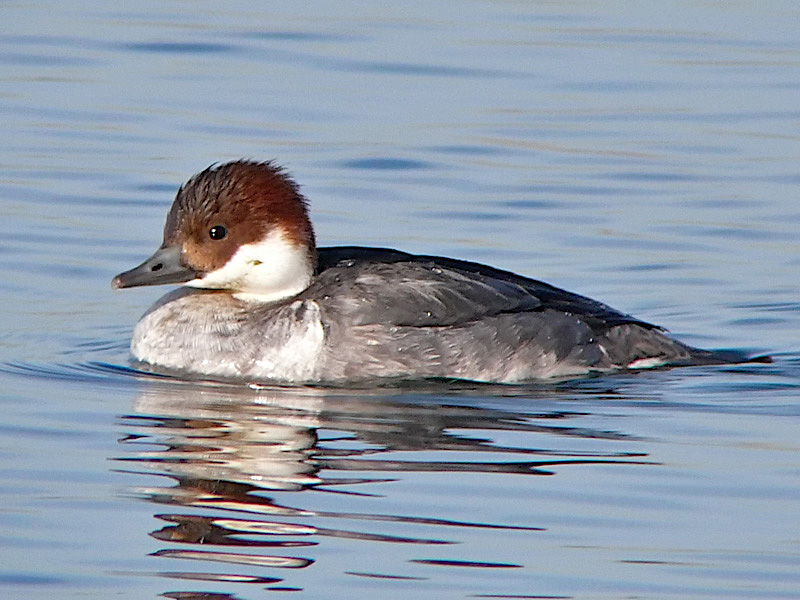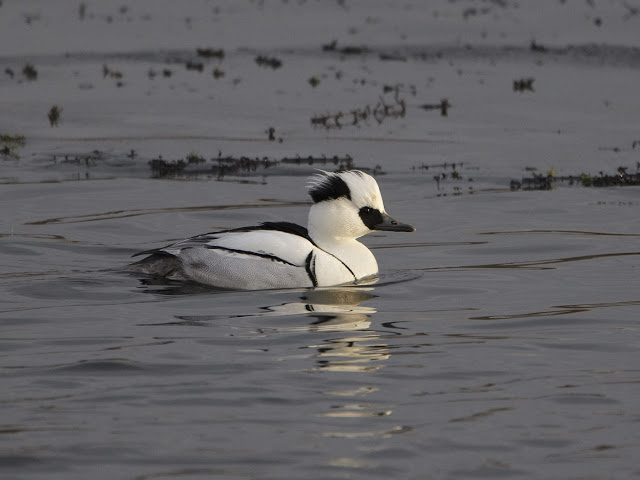Smew Mergellus albellus
Very scarce winter visitor, with occasional larger influxes in severe weather.



Smew: left, Barton Pits December 3rd 2007 (Graham Catley); centre, Covenhame Reservoir February 2007 (Russell Hayes): right, Barton Pits January 6th 2011 (Graham Catley).
Smew has always been a very scare species in Lincolnshire with occasional influxes in hard winters. One of the first on record was that of 1956, when Smew were unusually numerous: 15 were at Killingholme February 23rd increasing to 25 on March 23rd. At Grimsby Docks, 12 were present February 25th-March 12th, and 40 were at Grainthorpe March 23rd. More recently, in January 1985 was a cold and wintry month with frequent frosts and snowfalls. A depression on the 20th tracked across the UK bringing snowfalls and and as it deepened off the NE coast of Scotland it brought a very cold northerly airstream to the UK and many freshwater bodies were frozen over. These conditions brought a hard weather movement of wildfowl into the county, including Smew. There were 109 records in January and 82 in February. This saw 3-10 birds at New Holland, Grainthorpe, Tetney, Donna Nook, Holbeach Marsh, Surfleet, Saltfleetby, Wolla Bank and Gibraltar Point as well as at the larger, unfrozen freshwaters bodies at North Somercotes Lido, Tattershall Pits and West Deeping Pits. Largest counts were of 14 January 25th at New Holland and 16 Holbeach Marsh January 28th. Conditions ameliorated from the end of January into February and few remained in March. In more recent times in the decade 2009-2018, LBR reports per year ranged from a low of two in 2015 to 31 in 2012 with an average of 13 per year. The years 2011 and 2012 did see winter influxes with ice and freezing weather and 31 were recorded in 2012 and 30 in 2011. The largest single flock in these two winters was five on the unfrozen waters of the Witham south of Kirkstead Bridge on February 16th 2012. Reports from the coast on the sea are unusual. On January 11th 2013, three redheads were reported drifting south off Gibraltar Point. In the second half of that decade though, 2014-2018, the average has been only five per year. The BTO Atlas 2007-11 suggests wintering in Britain may be declining while numbers in Sweden are increasing because of “short-stopping”, i.e. a shorter migration resulting in a wintering distribution closer to breeding areas in Finland and Russia as winters become milder.
(Account as per new Birds of Lincolnshire (2021), included September 2022)
